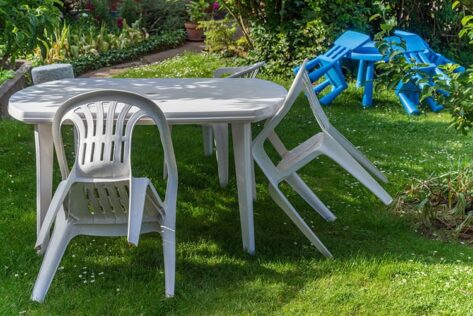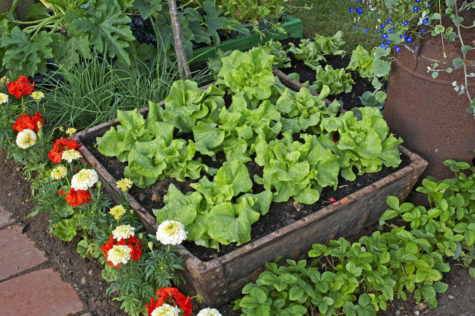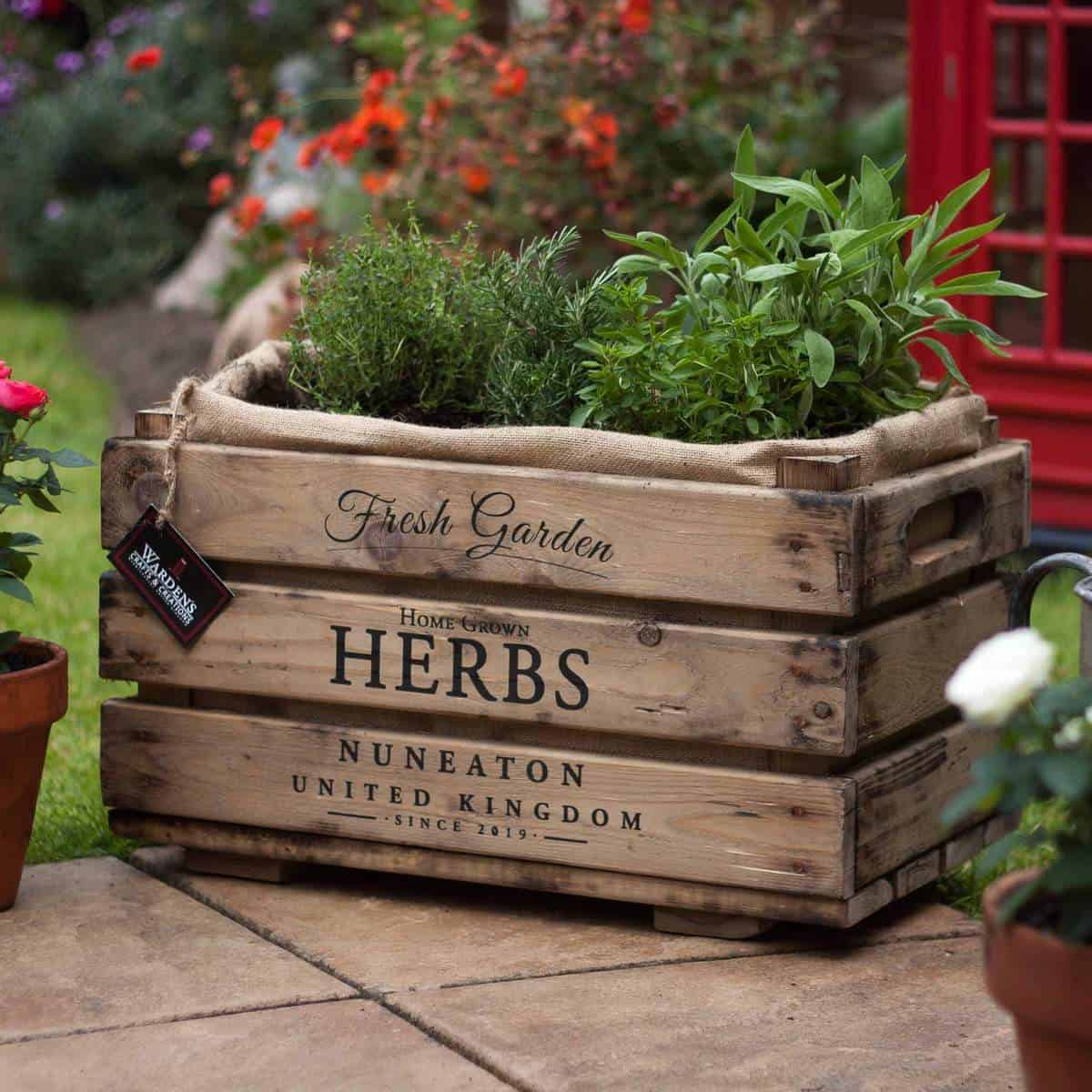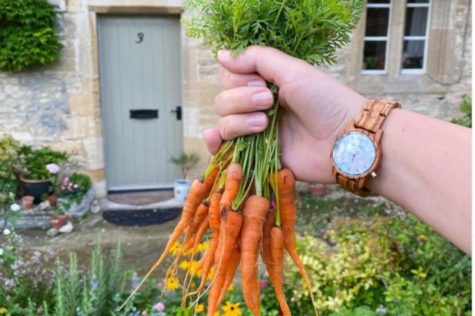Cabbage is a fantastic crop to start growing at home. Not only is it a healthy plate-filler that can be added to countless recipes, there are so many varieties that it’s possible to have some kind of harvestable cabbage for the majority of the year. If you want to learn how to grow cabbage in your garden and add its magnificent leaves to your foodscaping, you’ve come to the right place!

Growing cabbage: Where to begin?
Cabbage is part of the brassica family of plants – sometimes referred to as cruciferous vegetables or simply “cabbages”, even though broccoli, cauliflower, Brussel sprouts and mustards fall into the same category. These crops are typically very nutrient-rich.
Cabbage can grow in all kinds of soil, making it a great starter crop wherever you live. As long as your plants have enough space from other veggies, you can grow cabbage in anything from light, sandy soil to heavy, clay-based terrain. Unlike other plants, cabbage will tolerate a wide pH range too (as long as it’s well-watered). So, if you’re struggling to plant veggies in an exposed or seaside garden, figuring out how to grow cabbage is an excellent place to start.
Cabbage is also tolerant of cooler temperatures, and a light frost in spring or autumn can actually help them taste sweeter. It’s one of the reasons why cabbage is an easy crop to grow almost year-round, from February to late autumn. Here’s a quick growing guide to give you an idea of how to grow cabbage for different seasons:
For summer cabbage: Sow late Feb to early May (covered), plant outdoors in May/June
For winter cabbage: Sow April/May, move outdoors at the end of June
For spring cabbage: Sow July/August, plant outside in September and October
Sowing cabbage

Cabbages start from seeds – buying locally will ensure you’ve got the right crops for your area. It’s also important to rotate your crops when you’re growing brassicas, so you don’t use the same soil two seasons in a row – you can find more info on crop rotation in our post about square-foot gardening.
You can start your cabbages in potting trays, or plant them straight into the ground. Cabbages will also grow in large, deep containers, but small pots or grow-bags won’t be sufficient. Ideally, you should prep the soil several weeks beforehand by mixing in a good garden compost, and leaving it to settle.
When it comes to planting, compact soil is best, but gently rake the top layer to loosen it before planting your cabbage seeds just 1cm deep. Cabbages will need 30-40cm between them to fully grow, but if you’re planning to grow lots of veggies and/or simply don’t have the space to spread them out so far, there’s an alternative. Try starting your cabbages in a separate seed bed, and then moving them into your main vegetable patch when they begin to mature.
Wherever you start growing your cabbage seeds, give them some shelter as they germinate. A cold frame is good if you have one, but a plastic cover or cloche is fine.
Growing cabbages

When your cabbage seeds have germinated, you can remove the cover. Just remember that the soil is going to dry out a lot quicker once the seedlings are exposed to the elements, so check on them frequently and keep them moist. When a seedling has 2-3 leaves, you should move it to a separate growing container (if you haven’t been growing them in seed trays).
When your seedlings have 5-6 strong leaves, you can move them into their permanent home, lowering them into soil up to the base of their lowest leaves, and spacing them about 40cm apart, depending on the variety (check each seed packet). Water the soil thoroughly the day before, and again as you transplant them – there’s no such thing as “too much” watering at this stage! When your seedlings are positioned, press the soil down around them firmly.
As with most veggies, young cabbage plants will grow best with a bit of extra heat and sunshine, if you can provide it. Shelter is good, too – tall crops like beans or corn make excellent companion plants to brassicas for this reason.
Keep your cabbages watered as they grow (every 7-10 days), and top the surface of the surrounding soil up with mulch and compost to retain water and slowly release nutrients. When you’re watering, try to aim for the base of the plant – sitting droplets on the cabbage head can cause mildew, and result in a musty flavour (and nobody wants musty coleslaw)!
Harvesting cabbage
Heads will generally appear around 50 days after planting, but cabbages can reach maturity any time between 50-90 days of growth. Cabbage variety will play a big part in this (although there will be some variation within each crop), so you might want to factor this in when you’re choosing which types to plant. With a bit of planning, you can have several weeks of harvest, which also means less waste than everything becoming ripe at the same time!
When a cabbage head is ready, take a sharp knife and cut the stem slightly above the ground. Score a deep (1cm or so) cross in the stump to encourage a second, smaller cabbage growth later in spring or summer. The best time of day to harvest cabbage heads is first thing in the morning, before the heads absorb the heat of the day.
Common problems when growing cabbage

Preparing for possible issues with your crop is part of successfully knowing how to grow cabbages (or any vegetable). If you understand what is most likely to plague your wonderful veggies, it’s easier to take preventative measures, or act quickly to stop a problem spreading. Here are some of the most common challenges when you’re growing cabbages:
- Slugs and snails will be a major threat to your cabbages in the early stages, as they’ll devour newly forming leaves on young seedlings. Ultimately, this will stunt growth, and kill the plant if the damage is too severe. If you notice slime trails, it’s time to brush up on ways to keep snails out of your garden.
- Caterpillars can also pose a problem, as they love to feast on brassicas. You might be able to spot holes chomped through your cabbage leaves, but caterpillars can eat right through to the core, too. One or two insects can just be picked off (having butterflies in your garden is nice, after all), but you can save yourself the effort with a fine, bug-proof mesh cover.
- Cabbage root fly is – if the name doesn’t tell you – flies that target your cabbage roots. Well, their larvae do at least. Look for long (5cm) white grubs around the base of your plant and just below the surface of the soil. Again, growing your plants under a horticultural fleece, or bug-proof mesh is the best way to avoid pests like this.
- Club root causes cabbage roots to become thick and mutated, usually resulting in wilted, yellowing leaves. Although cabbages generally like plenty of water and are tolerant of acidic and alkaline soil, stop if you notice these symptoms. Hold off on watering, improve drainage and mix some lime into the soil to give the alkaline levels a boost.
Learning how to grow cabbage is the first step on a rewarding journey to crunchy coleslaw, hearty stews and comforting soups. Cabbage can easily be pickled or preserved (check out sauerkraut recipes), meaning that even a small cabbage patch can keep you topped up with veggies all year round.
Don’t forget to take a look at our other growing guides and sustainability tips!

Save this pin for later






